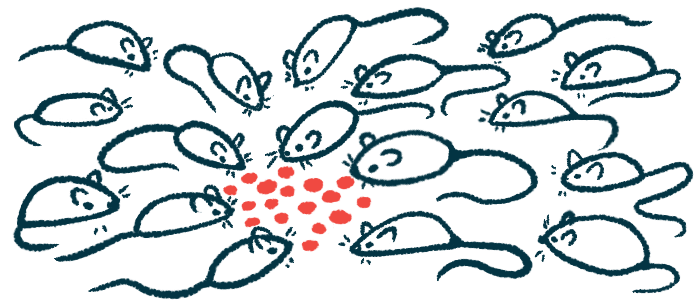Intrathecal TSHA-102 leads to improvements in Rett mice
Gains were seen in weight, survival, breathing, and motor skills

An injection of Taysha Gene Therapies’ experimental gene therapy TSHA-102 into the spinal canal of young mice modeling Rett syndrome can improve weight, survival, breathing, and motor skills, a preclinical study suggests.
The data support using the intrathecal route in ongoing Phase 1/2 clinical testing in women and girls, ages 5-8, with Rett syndrome. Both the REVEAL Adult Study (NCT05606614) and Pediatric Study (NCT06152237) are still recruiting.
The study, “The Efficacy of a Human-Ready miniMECP2 Gene Therapy in a Pre-Clinical Model of Rett Syndrome,” was published in Genes by researchers in the U.S. One of the researchers was formerly employed at Taysha.
Nearly all cases of Rett syndrome are caused by mutations in MECP2, a gene that provides instructions for making the MeCP2 protein, which is needed for normal brain development.
The goal of gene therapy for Rett syndrome is to deliver a working version of MECP2 to cells so they can start producing the protein on their own. Having too much of it can be harmful, however, so its levels must be carefully controlled.
TSHA-102 uses a technology called miRARE that allows for the controlled production of MeCP2 from miniMECP2, a shorter but working version of MECP2. Both are packaged aboard a modified adeno-associated virus 9 (AAV9) that serves as a delivery vector.
Testing Rett gene therapy in mice
In a company-sponsored preclinical study in mouse pups, an intracerebroventricular injection of TSHA-102 into the fluid-filled cavities of the brain increased MeCP2 while being harmless to cells that produced normal levels of the protein.
Here, the researchers tested how well a single intrathecal injection works when given to wild-type mice and those lacking MeCP2, dubbed Mecp2–/Y, at seven, 14, or 28 days after birth, the latter being a rough equivalent to a human adolescent.
They also tested whether daily injections of cyclosporine, an immunosuppressant, would extend survival in older Mecp2–/Y mice at risk of mounting a heightened immune response against the MeCP2 produced from TSHA-102.
Although Mecp2–/Y mice were lighter than wild-type mice, TSHA-102 increased their weight, with the largest improvements seen with early treatment alone or with cyclosporine.
TSHA-102 increased weight over a relatively long period beginning at 3 weeks of age when given at day seven of life at a dose of 2.2E11 vector genomes (vg) and from 6 weeks of age on at 8.8E10 vg, or 4.4E11.
In contrast, when TSHA-102 was given at days 14 or 28 of life, weight gain was brief. TSHA-102 combined with cyclosporine provided a more sustained benefit for up to 10 weeks of age.
Survival rates, breathing, stance compared
Left untreated, Mecp2–/Y mice survived no more than a median 9.7 weeks, less than the more than 15 weeks wild-type mice did. TSHA-102 increased survival of Mecp2–/Y mice for up to a median 15 weeks. The later they were treated, the longer they survived.
Those treated with TSHA-102 at 8.8E11 vg on day 28 after birth survived 57% longer than untreated Mecp2–/Y mice. Without cyclosporine, seven of those mice developed wounds, however.
TSHA-102 reduced both expiratory (breathing out) and inspiratory (breathing in) times in Mecp2–/Y mice, resulting in faster breathing frequency. It also reduced the duration of apnea episodes, when breathing repeatedly stops and starts, along with how often they occurred.
When given at day 14 after birth at 4.4E11 vg, TSHA-102 improved front stance, meaning it provided more stability as mice projected their body weight forward. It also improved other motor skills related to stride and propulsion.
Genetic material from the miniMECP2 was found in the brain and spinal cord, and the protein was present at higher levels in the spinal cord than in the brain of Mecp2–/Y mice.
“The safety and efficacy of TSHA-102 are favorable and supportive of ongoing clinical efforts,” the researchers wrote, noting “respiratory [breathing] and survival data present the strongest evidence for efficacy.”
The first woman given an intrathecal injection of TSHA-102 saw better sleep, breathing, and motor skills within the first weeks. A second woman has since been dosed at the same site in Montréal. Earlier this year, the first girl was dosed in the Pediatric Study, which is recruiting and will take place at several sites in the U.S. and in the U.K., should the company receive the go-ahead in that country.







